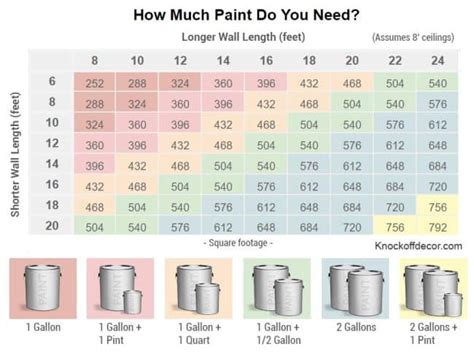Stop Guessing! Calculate Car Paint Quarts Now!
Painting your car can be a rewarding DIY project, transforming its look and potentially increasing its value. However, one of the most frustrating aspects is figuring out how much paint to buy. Buying too little means a second trip to the auto parts store, while buying too much leaves you with expensive leftover paint. This guide will help you accurately calculate the number of quarts of car paint you need, eliminating guesswork and saving you money and time.
How Many Quarts of Paint Do I Need for My Car?
There's no single answer to this question; it depends on several factors:
- Your Car's Size: Larger vehicles naturally require more paint than smaller ones. A compact car will need significantly less than a full-size SUV or truck.
- Number of Coats: Most paint jobs require multiple coats for optimal coverage and durability. Two coats are standard, but three might be necessary for certain colors or to cover imperfections.
- Paint Type: Different paint types have varying coverage rates. Acrylic lacquer typically offers slightly less coverage than urethane, for example.
- Surface Preparation: Thorough surface preparation, including sanding and priming, influences paint consumption. A poorly prepped surface may necessitate extra coats.
Calculating Paint Needs: A Step-by-Step Guide
Accurately estimating paint needs involves a few simple steps:
-
Determine Your Car's Surface Area: This is the most crucial step. While precise measurements are ideal, a good approximation can be obtained using online car surface area calculators. Many websites offer these calculators; simply enter your car's make, model, and year. These calculators usually provide the surface area in square feet.
-
Consider the Coverage Rate of Your Paint: Check the paint can's label for its specified coverage rate. This is usually expressed as square feet per quart or gallon. Different paints vary, so always consult the manufacturer's instructions.
-
Account for Multiple Coats: Multiply your car's surface area by the number of coats you plan to apply. For example, if your car's surface area is 200 square feet and you're applying two coats, you'll need enough paint to cover 400 square feet.
-
Divide Total Square Footage by the Coverage Rate: Divide the total square footage you need to cover (considering multiple coats) by the paint's coverage rate (in square feet per quart). This gives you the approximate number of quarts needed.
-
Add a Little Extra: It's always wise to add 10-20% extra paint to account for any unforeseen issues, such as drips, spills, or areas requiring extra coats due to imperfections.
Example:
Let's say your car's surface area is 250 square feet, you're using a paint with a coverage rate of 300 square feet per quart, and you're applying two coats.
- Total square footage: 250 sq ft * 2 coats = 500 sq ft
- Quarts needed: 500 sq ft / 300 sq ft/quart = 1.67 quarts
Rounding up and adding 10% extra, you'd need approximately 2 quarts of paint.
What if I'm Using a Primer?
If you're using a primer, you'll need to calculate the amount of primer separately, following the same steps outlined above. Remember that primer coverage rates may differ from your topcoat paint.
What About Different Paint Types? How Does That Affect My Calculations?
Different paint types (acrylic lacquer, urethane, etc.) have varying coverage rates. Always refer to the manufacturer's specifications on the paint can for accurate coverage information. Don't assume a universal coverage rate; it can significantly impact your calculations.
How Much Paint Do I Need to Touch Up Scratches?
For minor touch-ups, a small spray can or a small sample size of your car's paint is usually sufficient. You won't need to perform the extensive calculations described above for minor repairs.
By following these steps, you can accurately calculate the amount of car paint you need, saving you money, time, and the frustration of running out of paint mid-project. Remember to always double-check the manufacturer's instructions on your specific paint product.

